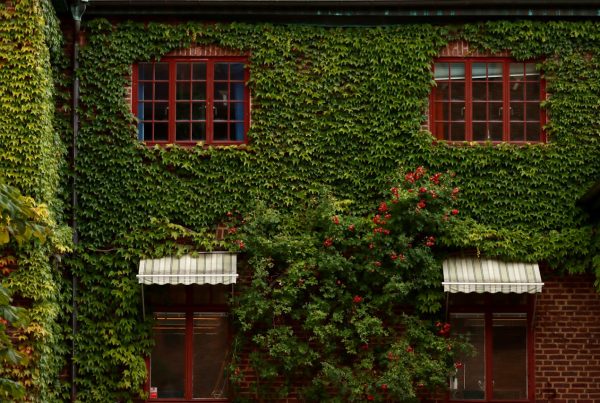We’re used to LED being the embodiment of eco-friendliness. What could be greener than LED lamps with its 80{e3829ec1db02d54faaf9fa2de0d48db26af01d7a7944a63c3b26976124791cab} efficiency and long operational life? Last Christmas 2011, when Paris’ city officials lit up Champs Elysees with over a million LED lights and the whole place was as luminous and beautiful as a supernova, we all thought, hey, we can splurge on holiday lights in such ridiculous amounts and scale and yet still be green in the process.
Sure, LEDs and CFLs trump incandescent bulbs by a mile. But apparently, an even greener lighting alternative exists, and it’s called Cold Cathode Lighting.
Cold Cathode Lighting is a tubular light that derives its light by passing an electrical current through a gas or vapor. Unlike hot cathodes that are heated by a filament, a cold cathode runs cooler and doesn’t get hot.
You’ve probably seen cold cathode lighting tubes before; they’re used to light up interiors of malls, boutiques, restaurants, particularly. Because of its inherent design, cold cathode tubes, just like neon tubes, can be bended and made to snake around a curve or around a room’s perimeter, which is why it’s extensively used for in interior design. The light casts no shadow, it’s fully dimmable, works with many timers, and comes in a variety of hues and moods of course.
Cold cathode lighting is what’s also used as backlight for LCD displays. And if you’ve ever tinkered with your PC, it’s the top choice when you want to lit up your tower’s interior just to show off your hardware, since, as mentioned above, cold cathode has no heating issues.
The main green feature though of cold cathode lighting is its energy efficiency. You get anywhere from 100 to 120 lumens per watt, compared to a typical white LED’s 40 lumens per watt. The reduced A/C loads mean they run significantly cooler. And because they’re more stable than ordinary CFL’s, cold cathode lighting uses up less mercury that you would have otherwise thrown away thrice when you use less durable CFLs.
Advantages of Cold Cathode Lighting:
- Contains 85{e3829ec1db02d54faaf9fa2de0d48db26af01d7a7944a63c3b26976124791cab} less mercury
- 25,000 hours lifespan
- Lifespan unaffected by on/off cycles
- Turns on and illuminates instantly
- Flicker-free
- Fully dimmable
- Low product cost
- Low energy costs
It’s easy to see why cold cathode lighting emerges as the winner among all other lighting systems, garnering favor from LEED. For comparison’s sake though, let’s review the differences and advantages of each.
Incandescent Bulbs
Advantages:
- Practically none
Incandescent bulbs might have that nostalgic thing going for them, being an invention by no less than Thomas Edison himself. But those things really have to go—they’re terribly energy-inefficient, what with their 5{e3829ec1db02d54faaf9fa2de0d48db26af01d7a7944a63c3b26976124791cab}-10{e3829ec1db02d54faaf9fa2de0d48db26af01d7a7944a63c3b26976124791cab} efficiency in converting electrical energy into light (the rest is simply radiated as heat).
Many countries are already phasing out incandescent bulbs (the U.S. has just started the gradual ban in January 2012), and you should too.
Compact Fluorescent Lamp (CFL)
Advantages:
- Lasts 8 to 15 times longer than incandescent lamps
- Uses up to 75{e3829ec1db02d54faaf9fa2de0d48db26af01d7a7944a63c3b26976124791cab} less energy than incandescent lamps
- Might cost more but pays for itself quickly.
CFLs are meant to replace the energy-waster incandescent lamps. With its reduced electric energy use and long lifespan, CFL’s are indeed a better choice. Aside from that, CFL’s contain far less mercury than incandescent bulbs.
Light Emitting Diode (LED)
Advantages:
- No wasted energy; efficiently converts electricity into light, with a luminous efficacy of
- No filaments, hence no burnouts = longer life
- Less prone to breakage than conventional light bulbs
- Smaller size than conventional light bulbs
- Fast switching
It used to be that LEDs were used as the indicator lamps in many appliances. Now, we’re no longer surprised to see an entire building lit up by LEDs, as engineers try to derive more and more lumens per watt from LEDs. LED’s versatility and bright green credentials is making them a popular choice over CFLs. In the past LED systems were expensive to install. They cost a bit higher than CFLs for sure, but with their low energy costs, return of investment is as quick as three years.
The point of all these is that we’ve made a lot of progress in terms of lighting our world. Whether you swear by LED or cold cathode lighting, what matters is that with your choice of lighting, your home or office’s carbon footprint can be greatly reduced.
Of course, nothing beats natural daylight. It’s the best kind of light there is. There’s just no substitute for the morale boost it gives. So maximize sunlight whenever you can.
Sources:
http://csamerica.net/comparisons/LED_CC_1.pdf
http://en.wikipedia.org/wiki/Cold_cathode
http://www.energystar.gov/ia/partners/promotions/change_light/downloads/Fact_Sheet_Mercury.pdf
http://www.ledlightingexplained.com/led-lighting-myths/
http://en.wikipedia.org/wiki/Light-emitting_diode











